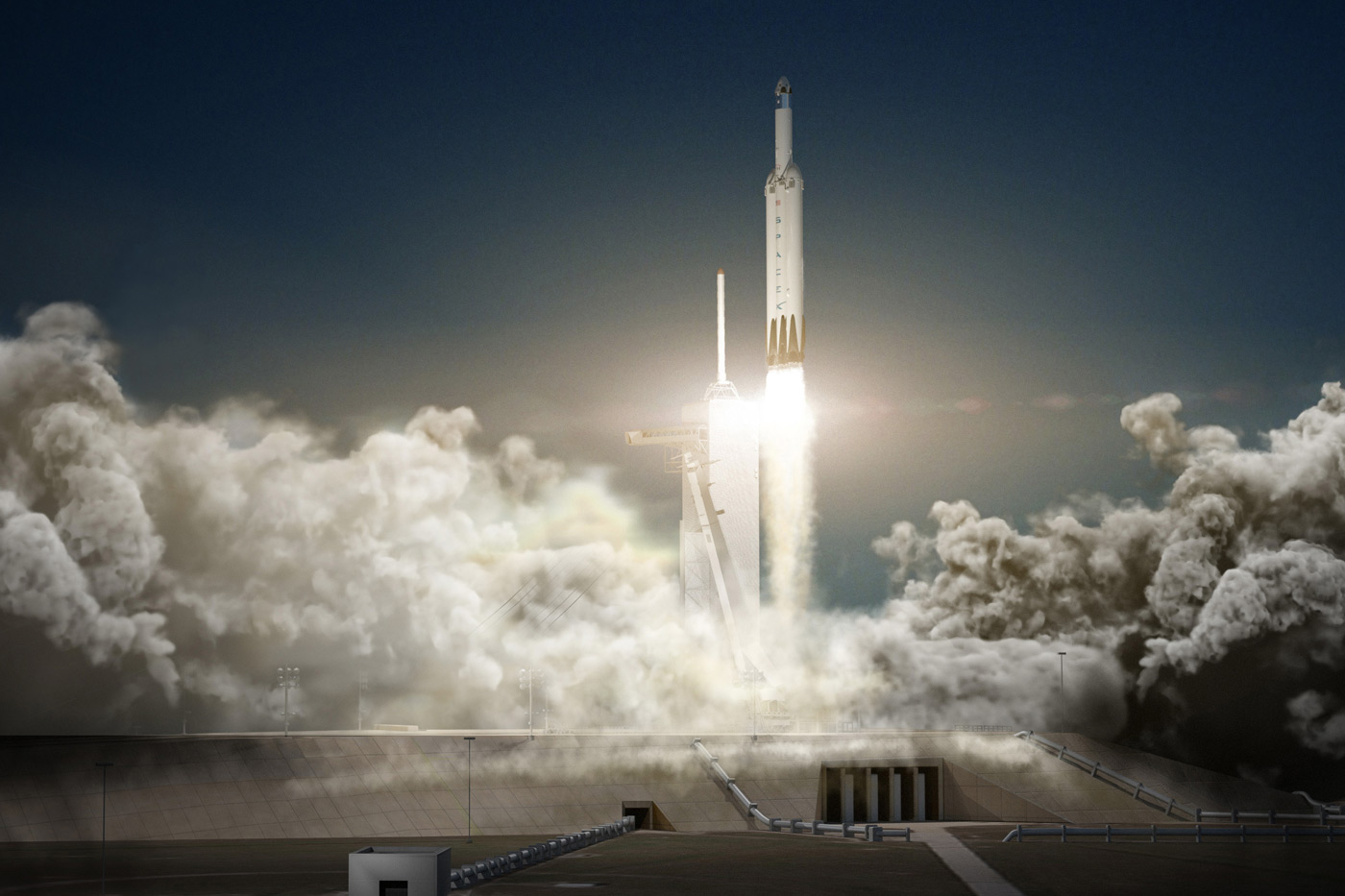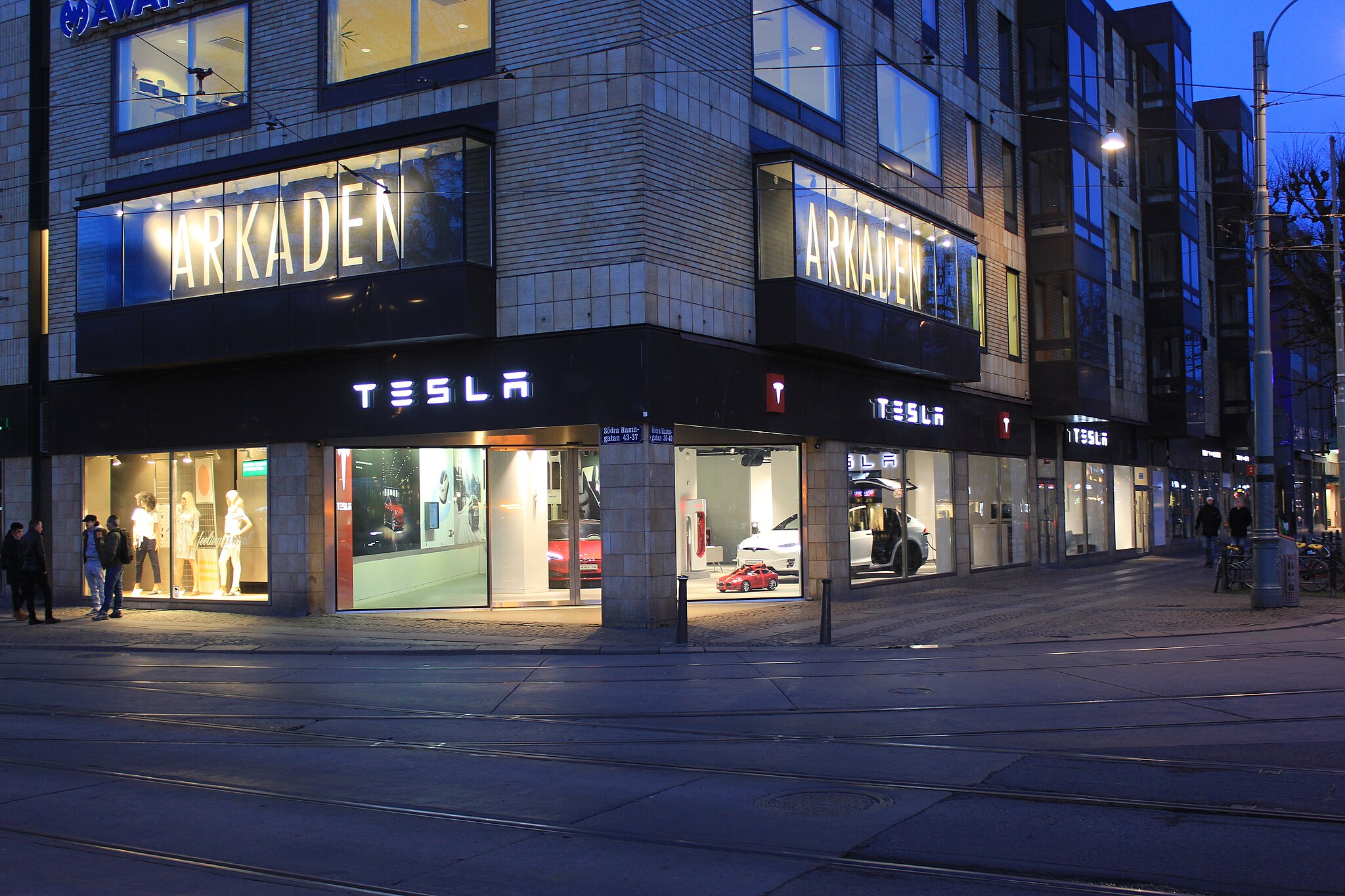News
Trump adds pro-SpaceX commercial space advocate to NASA transition team

After pulling over billionaire PayPal co-founder Peter Thiel to his overall White House transition team, President-elect Donald Trump has made another Elon-Musk-connected team addition, this time to his NASA transition team. The addition of Dr. Greg Autry comes as good news for SpaceX and commercial space fans overall.
Dr. Autry, an Assistant Professor of Clinical Entrepreneurship at the University of Southern California, focuses his research on innovation policy and government impact on entrepreneurism, with “new space” as a particular area of interest since 2003. He currently sits on the editorial board of the New Space Journal and, along with having published in several major news outlets, was the lead author on a report for the FAA Offices of Commercial Space Transportation analyzing the competitive advantage of the United States in the human spaceflight market.
In early September, Dr. Autry published an op-ed on SpaceNews.com advocating for the future of private space exploration despite the recent SpaceX launch pad anomaly. In the piece, he defended SpaceX’s 93% launch success rate compared to NASA’s 91% overall, and encouraged continuing support of the developments being made in commercial space programs using history as a guide for the potential advancements.
Further in favor of SpaceX, Dr. Autry outlined his policy recommendations for the incoming presidential administration in his mid-October Forbes article. In the piece, he advocated for the complete defunding of NASA’s Space Launch System, citing the high budget allotment for the program which has failed to keep up with the commercial space company technologies of SpaceX and Blue Origin.
Other team members added for Trump’s NASA transition are Steve Cook of Dynetics, a corporate vice president heavily involved in the AR-1 engine to replace the current Russian-made RD-180 being used by United Launch Alliance, and Jack Burns, a major advocate for lunar-based missions.
As is the case with other government departments, NASA will be making top level administration changes during the presidential administration transition, something that will have major impacts on the direction the agency will take in the coming years.
For historical context, NASA underwent a major change in direction under President Obama when the moon-focused Constellation program was canceled and the space shuttle was retired, temporarily handing human trips to the International Space Station over to the Russians via purchased rocket seats. The idea was for money to be invested into NASA’s commercial space program, thus majorly benefiting companies like SpaceX, but the plan was rerouted in Congress, and the birth of the Space Launch System came from political maneuvering over economic concerns. The SLS mission has now been directed towards deep space exploration and included as part of NASA’s “Journey to Mars”.
It’s almost anyone’s guess where things will head policy-wise under President Trump, but the direction seems to be circling three goals: the restoration of U.S. leadership in human spaceflight, a focus on deep space exploration over Earth-focused missions, and breaking down barriers hindering commercial space programs. While there are varying voices included on Trump’s transition team, having a strong advocate for the benefits of commercial space flight is welcome news.

Elon Musk
Delaware Supreme Court reinstates Elon Musk’s 2018 Tesla CEO pay package
The unanimous decision criticized the prior total rescission as “improper and inequitable,” arguing that it left Musk uncompensated for six years of transformative leadership at Tesla.

The Delaware Supreme Court has overturned a lower court ruling, reinstating Elon Musk’s 2018 compensation package originally valued at $56 billion but now worth approximately $139 billion due to Tesla’s soaring stock price.
The unanimous decision criticized the prior total rescission as “improper and inequitable,” arguing that it left Musk uncompensated for six years of transformative leadership at Tesla. Musk quickly celebrated the outcome on X, stating that he felt “vindicated.” He also shared his gratitude to TSLA shareholders.
Delaware Supreme Court makes a decision
In a 49-page ruling Friday, the Delaware Supreme Court reversed Chancellor Kathaleen McCormick’s 2024 decision that voided the 2018 package over alleged board conflicts and inadequate shareholder disclosures. The high court acknowledged varying views on liability but agreed rescission was excessive, stating it “leaves Musk uncompensated for his time and efforts over a period of six years.”
The 2018 plan granted Musk options on about 304 million shares upon hitting aggressive milestones, all of which were achieved ahead of time. Shareholders overwhelmingly approved it initially in 2018 and ratified it once again in 2024 after the Delaware lower court struck it down. The case against Musk’s 2018 pay package was filed by plaintiff Richard Tornetta, who held just nine shares when the compensation plan was approved.
A hard-fought victory
As noted in a Reuters report, Tesla’s win avoids a potential $26 billion earnings hit from replacing the award at current prices. Tesla, now Texas-incorporated, had hedged with interim plans, including a November 2025 shareholder-approved package potentially worth $878 billion tied to Robotaxi and Optimus goals and other extremely aggressive operational milestones.
The saga surrounding Elon Musk’s 2018 pay package ultimately damaged Delaware’s corporate appeal, prompting a number of high-profile firms, such as Dropbox, Roblox, Trade Desk, and Coinbase, to follow Tesla’s exodus out of the state. What added more fuel to the issue was the fact that Tornetta’s legal team, following the lower court’s 2024 decision, demanded a fee request of more than $5.1 billion worth of TSLA stock, which was equal to an hourly rate of over $200,000.
Delaware Supreme Court Elon Musk 2018 Pay Package by Simon Alvarez
News
Tesla Cybercab tests are going on overdrive with production-ready units
Tesla is ramping its real-world tests of the Cybercab, with multiple sightings of the vehicle being reported across social media this week.

Tesla is ramping its real-world tests of the Cybercab, with multiple sightings of the autonomous two-seater being reported across social media this week. Based on videos of the vehicle that have been shared online, it appears that Cybercab tests are underway across multiple states.
Recent Cybercab sightings
Reports of Cybercab tests have ramped this week, with a vehicle that looked like a production-ready prototype being spotted at Apple’s Visitor Center in California. The vehicle in this sighting was interesting as it was equipped with a steering wheel. The vehicle also featured some changes to the design of its brake lights.
The Cybercab was also filmed testing at the Fremont factory’s test track, which also seemed to involve a vehicle that looked production-ready. This also seemed to be the case for a Cybercab that was spotted in Austin, Texas, which happened to be undergoing real-world tests. Overall, these sightings suggest that Cybercab testing is fully underway, and the vehicle is really moving towards production.
Production design all but finalized?
Recently, a near-production-ready Cybercab was showcased at Tesla’s Santana Row showroom in San Jose. The vehicle was equipped with frameless windows, dual windshield wipers, powered butterfly door struts, an extended front splitter, an updated lightbar, new wheel covers, and a license plate bracket. Interior updates include redesigned dash/door panels, refined seats with center cupholders, updated carpet, and what appeared to be improved legroom.
There seems to be a pretty good chance that the Cybercab’s design has been all but finalized, at least considering Elon Musk’s comments at the 2025 Annual Shareholder Meeting. During the event, Musk confirmed that the vehicle will enter production around April 2026, and its production targets will be quite ambitious.
News
Tesla gets a win in Sweden as union withdraws potentially “illegal” blockade
As per recent reports, the Vision union’s planned anti-Tesla action might have been illegal.

Swedish union Vision has withdrawn its sympathy blockade against Tesla’s planned service center and showroom in Kalmar. As per recent reports, the Vision union’s planned anti-Tesla action might have been illegal.
Vision’s decision to pull the blockade
Vision announced the blockade in early December, stating that it was targeting the administrative handling of Tesla’s facility permits in Kalmar municipality. The sympathy measure was expected to start Monday, but was formally withdrawn via documents sent to the Mediation Institute and Kalmar Municipality last week.
As noted in a Daggers Arbete report, plans for the strike were ultimately pulled after employer group SKR highlighted potential illegality under the Public Employment Act. Vision stressed its continued backing for the Swedish labor model, though Deputy negotiation manager Oskar Pettersson explained that the Vision union and IF Metall made the decision to cancel the planned strike together.
“We will not continue to challenge the regulations,” Petterson said. “The objection was of a technical nature. We made the assessment together with IF Metall that we were not in a position to challenge the legal assessment of whether we could take this particular action against Tesla. Therefore, we chose to revoke the notice itself.”
The SKR’s warning
Petterson also stated that SKR’s technical objection to the Vision union’s planned anti-Tesla strike framed the protest as an unauthorized act. “It was a legal assessment of the situation. Both for us and for IF Metall, it is important to be clear that we stand for the Swedish model. But we should not continue to challenge the regulations and risk getting judgments that lead nowhere in the application of the regulations,” he said.
Vision ultimately canceled its planned blockade against Tesla on December 9. With Vision’s withdrawal, few obstacles remain for Tesla’s long-planned Kalmar site. A foreign electrical firm completed work this fall, and Tesla’s Careers page currently lists a full-time service manager position based there, signaling an imminent opening.








